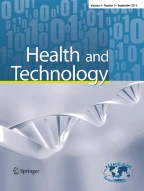Abstract
Nowadays, in healthcare industry, data analysis can save lives by improving the medical diagnosis. And with the huge development in software engineering, different data mining tools are available for researchers, and used to conduct studies and experiments. For this, we have decided to compare six common data mining tools: Orange, Weka, RapidMiner, Knime, Matlab, and Scikit-Learn, using six machine learning techniques: Logistic Regression, Support Vector Machine, K Nearest Neighbors, Artificial Neural Network, Naïve Bayes, and Random Forest by classifying heart disease. The dataset used in this study has 13 features, one target variable, and 303 instances in which 139 suffers from cardiovascular disease and 164 are healthy subjects. Three performance measures were used to compare the performance of the techniques in each tool: the accuracy, the sensitivity, and the specificity. The results showed that Matlab was the best performing tool, and Matlab’s Artificial Neural Network model was the best performing technique. We concluded this research by plotting the Receiver operating characteristic curve of Matlab and by giving several recommendations on which tool to choose taking into account the users experience in the field of data mining.


Similar content being viewed by others
References
WHO. Cardiovascular diseases (CVDs). 17 May 2017. https://www.who.int/news-room/fact-sheets/detail/cardiovascular-diseases-(cvds). Accessed 20 Dec 2019.
National Survey on Population and Family Health. Ministry of health of morocco. 2018. http://www.sante.gov.ma/Documents/2019/10/ENPSF-2018.pdf. Accessed Dec 2019.
Noncommunicable diseases country profiles World Health Organization. 2018. https://www.who.int/nmh/countries/2018/mar_en.pdf?ua=1. Accessed Dec 2019.
Mohtadi K, Msaad R, Essadik R, Lebrazi H, Kettani A. Current risk factors of ischemic cardiovascular diseases estimated in a representative population of Casablanca. Endocrinol Metab Syndr. 2018;7(284):2161–1017.10002.
Wang S, Summers RM. Machine learning and radiology. Med Image Anal. 2012;16(5):933–51.
Kourou K, Exarchos TP, Exarchos KP, Karamouzis MV, Fotiadis DI. Machine learning applications in cancer prognosis and prediction. Comput Struct Biotechnol J. 2015;13:8–17.
Aggarwal CC. Data mining: the textbook. Springer; 2015.
Panesar A. Machine learning and AI for healthcare: Springer; 2019.
Haraty RA, Dimishkieh M, Masud M. An enhanced k-means clustering algorithm for pattern discovery in healthcare data. Int J Distrib Sensor Netw. 2015;11(6):615740.
Kavakiotis I, Tsave O, Salifoglou A, Maglaveras N, Vlahavas I, Chouvarda I. Machine learning and data mining methods in diabetes research. Comput Struct Biotechnol J. 2017;15:104–16.
Shameer K, Johnson KW, Glicksberg BS, Dudley JT, Sengupta PP. Machine learning in cardiovascular medicine: are we there yet? Heart. 2018;104(14):1156–64.
Benba A, Jilbab A, Hammouch A. Discriminating between patients with Parkinson’s and neurological diseases using cepstral analysis. IEEE Trans Neural Syst Rehabil Eng. 2016;24(10):1100–8.
Dwivedi AK. Performance evaluation of different machine learning techniques for prediction of heart disease. Neural Comput & Applic. 2018;29(10):685–93.
Dua D, Graff C. UCI machine learning repository. School of Information and Computer Science, University of California, Irvine, CA. 2019.
Bhatt A, Dubey SK, Bhatt AK, Joshi M, editors. Data Mining Approach to Predict and Analyze the Cardiovascular Disease. Proceedings of the 5th International Conference on Frontiers in Intelligent Computing: Theory and Applications; 2017: Springer.
Sarangam Kodati DRV. Analysis of heart disease using in data mining tools Orange and Weka. Global J Comput Sci Technol. 2018.
Escamilla AKG, El Hassani AH, Andres E. A Comparison of Machine Learning Techniques to Predict the Risk of Heart Failure. Machine Learning Paradigms. Springer; 2019. p. 9–26.
Latha CBC, Jeeva SC. Improving the accuracy of prediction of heart disease risk based on ensemble classification techniques. Inf Med Unlocked. 2019;16:100203.
Amin MS, Chiam YK, Varathan KD. Identification of significant features and data mining techniques in predicting heart disease. Telematics Inform. 2019;36:82–93.
Availability of data and material
UCI machine learning repository. School of Information and Computer Science, University of California, Irvine. https://archive.ics.uci.edu/ml/datasets/Heart+Disease
-
Orange data mining: https://orange.biolab.si/download/#windows
-
RapidMiner Studio: https://rapidminer.com/get-started/
-
KNIME Analytics Platform: https://www.knime.com/downloads
-
Scikit-learn: https://scikit-learn.org/stable/
Author information
Authors and Affiliations
Corresponding author
Ethics declarations
Conflict of interests
Ilias Tougui declares that he has no conflict of interest. And he doesn’t have any financial relationship with the organization. Abdelilah Jilbab declares that he has no conflict of interest. And he doesn’t have any financial relationship with the organization. Jamal El Mhamdi declares that he has no conflict of interest. And he doesn’t have any financial relationship with the organization. All procedures followed were in accordance with the ethical standards of the responsible committee on human experimentation (institutional and national) and with the Helsinki Declaration of 1975, as revised in 2008.
Conflict of interest
The authors declare that they have no competing of interests.
Additional information
Publisher’s note
Springer Nature remains neutral with regard to jurisdictional claims in published maps and institutional affiliations.
Rights and permissions
About this article
Cite this article
Tougui, I., Jilbab, A. & El Mhamdi, J. Heart disease classification using data mining tools and machine learning techniques. Health Technol. 10, 1137–1144 (2020). https://doi.org/10.1007/s12553-020-00438-1
Received:
Accepted:
Published:
Issue Date:
DOI: https://doi.org/10.1007/s12553-020-00438-1
